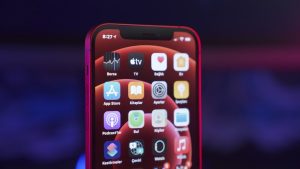Which iPhones Support eSIM Technology
eSIM, or embedded SIM, is a relatively new technology that is revolutionizing the way we use SIM cards in our mobile devices. Unlike traditional SIM cards, which are physical, removable chips that store subscriber information and are inserted into a device, eSIM is a virtual, embedded chip that is built into the device itself. This means that instead of having to physically swap out SIM cards when changing carriers or traveling internationally, users can simply download a new SIM profile onto their device. eSIM technology is being adopted by an increasing number of mobile carriers and device manufacturers, and is set to become the new standard for mobile connectivity.
eSIM technology offers a number of advantages over traditional SIM cards. For one, it allows for greater flexibility and convenience for users. With eSIM, users can easily switch between different carriers and plans without having to physically swap out SIM cards. This is particularly useful for frequent travelers, who can switch to a local carrier’s plan when abroad without having to find and purchase a physical SIM card. Additionally, eSIM technology allows for the possibility of having multiple phone numbers on a single device, making it easier for users to separate personal and work lines without needing a second phone. Overall, eSIM technology represents a significant step forward in the evolution of mobile connectivity.
Key Takeaways
- eSIM technology is a digital SIM card that allows users to activate a cellular plan without a physical SIM card.
- iPhones that support eSIM technology include the iPhone XS, iPhone XS Max, iPhone XR, iPhone 11, iPhone 11 Pro, and iPhone 11 Pro Max.
- Benefits of using eSIM technology include the ability to have multiple phone numbers on one device, easy switching between carriers, and no need for a physical SIM card.
- To set up eSIM on supported iPhones, users can go to Settings > Cellular > Add Cellular Plan and follow the on-screen instructions.
- eSIM compatible carriers include major carriers like AT&T, Verizon, T-Mobile, and international carriers like Vodafone and Orange.
- Limitations of eSIM technology include limited carrier support, potential compatibility issues with older devices, and the inability to use eSIM and physical SIM simultaneously on some devices.
- The future of eSIM technology is promising, with more devices and carriers expected to support eSIM, leading to greater flexibility and convenience for users.
iPhones that support eSIM technology
Apple has been at the forefront of eSIM technology adoption, with several of its iPhone models supporting eSIM functionality. The iPhone XS, iPhone XS Max, iPhone XR, iPhone 11, iPhone 11 Pro, and iPhone 11 Pro Max are all equipped with eSIM capabilities. This means that users of these devices can take advantage of the benefits of eSIM technology, such as the ability to easily switch between carriers and plans without needing to physically swap out SIM cards. Additionally, these iPhones also support dual SIM functionality, allowing users to have two phone numbers on a single device, one on the physical SIM card and one on the eSIM.
The inclusion of eSIM support in these iPhone models represents a significant step forward in the adoption of eSIM technology. As one of the most popular smartphone manufacturers in the world, Apple’s embrace of eSIM has helped to drive awareness and adoption of the technology among consumers and mobile carriers alike. With the increasing availability of eSIM-compatible iPhones, more users are able to experience the convenience and flexibility that eSIM technology has to offer.
Benefits of using eSIM technology
The adoption of eSIM technology offers a wide range of benefits for both consumers and mobile carriers. For consumers, one of the biggest advantages of eSIM is the convenience and flexibility it provides. With eSIM, users can easily switch between different carriers and plans without needing to physically swap out SIM cards. This is particularly useful for frequent travelers, who can switch to a local carrier’s plan when abroad without needing to find and purchase a physical SIM card. Additionally, eSIM technology allows for the possibility of having multiple phone numbers on a single device, making it easier for users to separate personal and work lines without needing a second phone.
For mobile carriers, eSIM technology represents an opportunity to streamline their operations and improve customer satisfaction. With eSIM, carriers can offer a more seamless onboarding process for new customers, as there is no need to physically distribute and activate SIM cards. Additionally, eSIM allows carriers to offer more flexible plans and services, as users can easily switch between different plans without needing to visit a store or wait for a new SIM card to be delivered. Overall, the adoption of eSIM technology represents a significant step forward in the evolution of mobile connectivity.
How to set up eSIM on supported iPhones
| iPhone Model | Steps to Set Up eSIM |
|---|---|
| iPhone XS, XS Max, XR | 1. Go to Settings > Cellular > Add Cellular Plan 2. Use your iPhone to scan the QR code provided by your carrier or enter the details manually |
| iPhone 11, 11 Pro, 11 Pro Max | 1. Go to Settings > Cellular > Add Cellular Plan 2. Use your iPhone to scan the QR code provided by your carrier or enter the details manually |
| iPhone SE (2nd generation) | 1. Go to Settings > Cellular > Add Cellular Plan 2. Use your iPhone to scan the QR code provided by your carrier or enter the details manually |
Setting up eSIM on supported iPhones is a relatively straightforward process. To begin, users will need to obtain an eSIM activation code from their mobile carrier. This code can typically be obtained through the carrier’s website or by visiting a store location. Once the activation code has been obtained, users can proceed with setting up their eSIM by following these steps:
1. Open the Settings app on your iPhone
2. Tap on “Cellular”
3. Select “Add Cellular Plan”
4. Use your iPhone to scan the QR code provided by your carrier or enter the activation code manually
5. Follow the on-screen instructions to complete the setup process
Once the setup process is complete, users will be able to switch between their physical SIM card and eSIM as needed, as well as take advantage of dual SIM functionality if supported by their device.
eSIM compatible carriers
The adoption of eSIM technology has been steadily growing among mobile carriers around the world. Many major carriers now offer support for eSIM activation on compatible devices, including iPhones. Some of the leading carriers that support eSIM technology include AT&T, Verizon, T-Mobile, Vodafone, EE, and many others. These carriers offer a range of plans and services that are compatible with eSIM, allowing users to take advantage of the convenience and flexibility that eSIM technology provides.
In addition to major carriers, there are also a growing number of smaller and regional carriers that offer support for eSIM activation. As eSIM technology continues to gain traction in the mobile industry, it is likely that even more carriers will begin offering support for eSIM in the near future. This will further expand the availability of eSIM-compatible plans and services for consumers around the world.
Limitations of eSIM technology

While eSIM technology offers many benefits, it is not without its limitations. One of the main limitations of eSIM is its current lack of universal support among mobile carriers and devices. While adoption of eSIM is growing, there are still many carriers and devices that do not yet support the technology. This can limit the availability of eSIM-compatible plans and services for consumers in certain regions or with certain carriers.
Another limitation of eSIM technology is its compatibility with older devices. While newer iPhone models support eSIM functionality, older models may not have this capability. This means that users with older devices may not be able to take advantage of the benefits of eSIM technology without upgrading to a newer device.
Future of eSIM technology
The future of eSIM technology looks promising, with continued growth and adoption expected in the coming years. As more mobile carriers and device manufacturers embrace eSIM technology, its availability and compatibility are likely to expand further. This will make it easier for consumers to take advantage of the convenience and flexibility that eSIM provides.
In addition to increased availability, advancements in eSIM technology are also expected to bring new features and capabilities. For example, future iterations of eSIM may offer enhanced security features and improved integration with other connected devices, such as smartwatches and tablets.
Overall, the future of eSIM technology looks bright, with continued innovation and adoption expected to bring even greater convenience and flexibility to mobile connectivity. As more consumers experience the benefits of eSIM technology, its popularity is likely to continue growing, making it an integral part of the mobile industry for years to come.
If you’re interested in learning more about which iPhones have eSIM capabilities, you should check out this article on Freezebyte. They provide a comprehensive guide on which iPhone models support eSIM technology and how to set it up on your device. It’s a great resource for anyone looking to take advantage of the convenience and flexibility that eSIM offers.
FAQs
What is an eSIM?
An eSIM, or embedded SIM, is a digital SIM card that allows you to activate a cellular plan without needing a physical SIM card.
Which iPhones have eSIM capability?
As of 2021, the following iPhone models have eSIM capability: iPhone XS, iPhone XS Max, iPhone XR, iPhone 11, iPhone 11 Pro, iPhone 11 Pro Max, iPhone SE (2nd generation), iPhone 12, iPhone 12 mini, iPhone 12 Pro, and iPhone 12 Pro Max.
Can I use eSIM and a physical SIM card at the same time on an iPhone?
Yes, many iPhone models with eSIM capability allow you to use both eSIM and a physical SIM card simultaneously, enabling you to have two separate cellular plans on one device.
How do I activate an eSIM on my iPhone?
To activate an eSIM on your iPhone, you can either scan a QR code provided by your carrier or enter the activation details manually through the Settings app.
Can I switch between eSIM and physical SIM card on my iPhone?
Yes, you can switch between eSIM and physical SIM card on your iPhone by going to the Settings app and selecting the cellular option to switch between the two.



